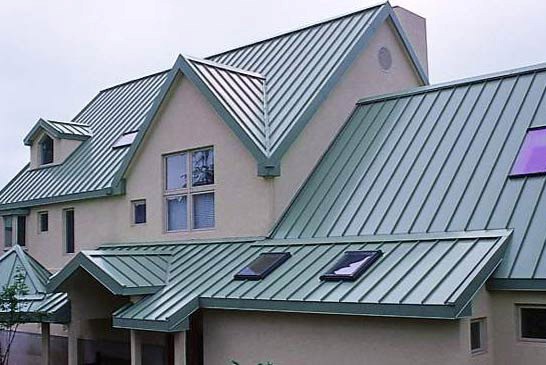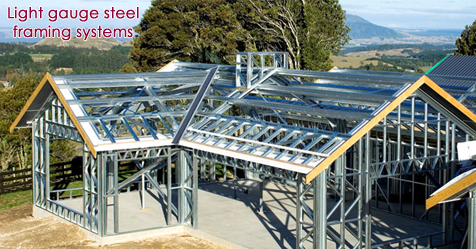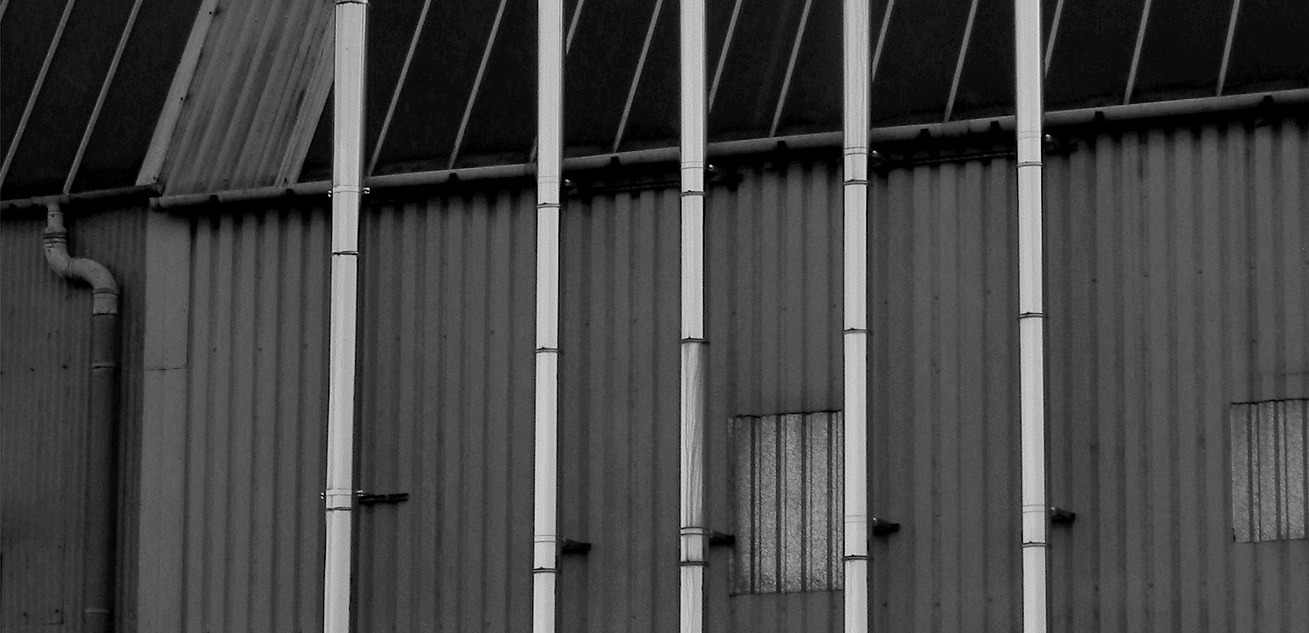Metal in construction

|

|

|

|
Contents |
[edit] Introduction
Metals are solid material that are generally hard, shiny, malleable, fusible, ductile, and have good electrical and thermal conductivity. Metals are commonly used in the construction industry due to their durability and strength to form structural components, pipework, cladding materials and other components.
[edit] Steel.
Steel is an alloy of iron and a number of other elements, mainly carbon, that has a high tensile strength and relatively low cost and is used for structural and other applications in the construction industry.
Types of steel include:
- Stainless steel: Steel combined with chromium (and sometimes nickel). Stainless steels generally do not form rust on their surfaces and do not discolour.
- Galvanised steel: A zinc coated steel that is resistant to corrosion.
- Weathering steel: Has a rust-like appearance that can resist corrosion and abrasion, by forming a protective surface layer, or patina.
- Other alloys.
For more information see: Steel.
[edit] Aluminium
Because of its ductility, aluminium can be formed into many shapes and profiles. Aluminium wall cladding systems are commonly used for building exteriors, with large wall panels requiring fewer joints, resulting in time-efficient installation. Today, aluminium is the second most used metal in buildings after steel, used for roofing, flashing, wall panels, windows and doors, spandrels, and so on.
For more information see: Aluminium.
[edit] Iron
Iron is the chemical element most commonly found on Earth by mass. As iron-bearing rock is plentiful, iron alloys are popular industrial and construction materials.
Types of iron include:
- Cast iron.
- Pig iron.
- Wrought iron.
For more information see: Iron.
[edit] Copper
Copper is a soft, malleable, and ductile metal with high thermal and electrical conductivity. It is a pinkish-orange colour. Copper is commonly used in the construction industry to form pipes and tubing, as it is malleable and joints can be easily formed by soldering. It is also used as a cladding material, sometimes allowed to oxidise to a blue green colour.
For more information see: Copper.
[edit] Lead
Lead is a heavy metal that can be toxic when absorbed into the body.
In construction, lead is used due to its ductility to form roofs and other cladding panels as well as windows, linings for cornices, tanks, copings, gutters and downpipes, flashing, and so on. It is also a component of soft solder.
Historically it was used in paints and pipework. Most lead-based paint was banned from sale to the general public in the UK in 1992. It has not been used for water pipes since 1970, however, it may still be present in older properties. It is recommended that lead pipes should be replaced.
[edit] Others
Other metals that might be used in construction include:
[edit] Alternative meanings
The term 'metal' can also be used to refer to:
- Molten glass.
- Constructing or repairing a highway with road metal (a metalled road). For more information see: Metalled.
[edit] Related articles on Designing Buildings
- Aluminium.
- Bronze.
- Cast iron.
- Copper.
- Corrosion resistant alloy CRA.
- Difference between cast iron and wrought iron.
- Failure of cast iron beams.
- Ferrous.
- Gold.
- Iron.
- Ironwork.
- Lead.
- Mesh mould metal.
- Metal composite panels.
- Metal fabrication.
- Metal profile cladding
- Metal roofing.
- Silver.
- Steel.
- Structural metal.
- The Iron Bridge.
- Tin.
- Types of metal.
- Types of materials.
- Types of steel.
- Vickers hardness rating scale.
- Wrought iron.
Featured articles and news
Infrastructure that connect the physical and digital domains.
Harnessing robotics and AI in challenging environments
The key to nuclear decommissioning and fusion engineering.
BSRIA announces Lisa Ashworth as new CEO
Tasked with furthering BSRIA’s impressive growth ambitions.
Public buildings get half a million energy efficiency boost
£557 million to switch to cleaner heating and save on energy.
CIOB launches pre-election manifesto
Outlining potential future policies for the next government.
Grenfell Tower Inquiry announcement
Phase 2 hearings come to a close and the final report due in September.
Progress from Parts L, F and O: A whitepaper, one year on.
A replicated study to understand the opinion of practitioners.
ECA announces new president 2024
Electrical engineer and business leader Stuart Smith.
A distinct type of countryside that should be celebrated.
Should Part O be extended to existing buildings?
EAC brands heatwave adaptation a missed opportunity.
Definition of Statutory in workplace and facilities management
Established by IWFM, BESA, CIBSE and BSRIA.
Tackling the transition from traditional heating systems
59% lack the necessary information and confidence to switch.
The general election and the construction industry
As PM, Rishi Sunak announces July 4 date for an election.
Eco apprenticeships continue help grow green workforce
A year after being recognised at the King's coronation.
Permitted development rights for agricultural buildings
The changes coming into effect as of May 21, 2024.






















Comments
[edit] To make a comment about this article, or to suggest changes, click 'Add a comment' above. Separate your comments from any existing comments by inserting a horizontal line.